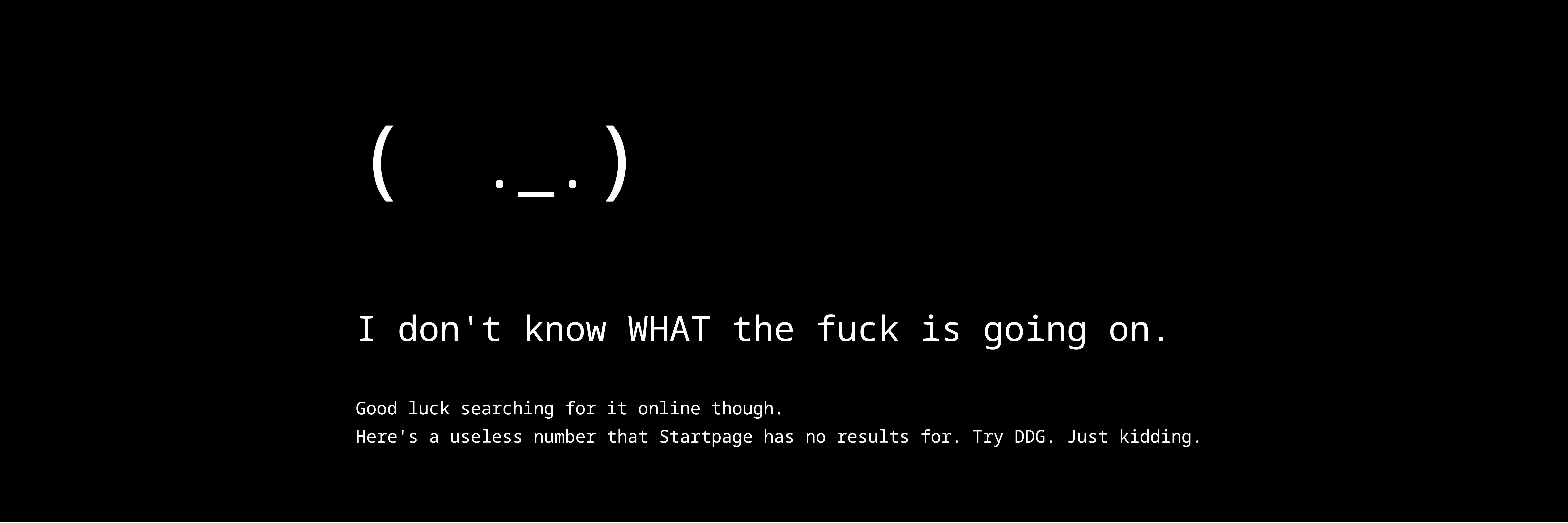Atomic distros by Universal Blue build proprietary codecs into their images
qweertz (they/she)
tech-savy geek and queer disaster
(I also hate capitalism and have a general interest in social sciences)
- 0 Posts
- 18 Comments
Maybe Aurora by Universal Blue?
It’s based off of Fedora Silverblue, so it’s atomic, rock solid and basically guaranteed to work (more secure by design as well). But uses KDE Plasma instead of Gnome and has a bunch of improvements here and there, including proprietary codecs and Nvidia drivers preinstalled (latter depending on the image you choose)


The partial unannounced update broke my installation, which is why I finally ditched Nobara for Bluefin
I get wanting to phase out Mercurial in favour of git. But why did they have to choose Github T_T
Ideally they would have just hosted a their own Forgejo instance (heck, a Gitlab one would have been better too FFS). Even just using Codeberg and donating would have been better
The for-profit side of Mozilla seems to have succeeded in purging most of the principles Mozilla used to have (IK they have been eroding over the years and sometimes been too “pragmatic”, this is just the cherry on top of a long series of shitpiles)
if Mozilla actually stood for a free/libre future they’d push Forgejo to the lvl they need it to be (if it already isn’t capable of all that stuff. Haven’t rly interacted much with it).
Since they will still keep the CI/CD on Mercurial for now, there is even less valid reasons for using Github…
Doesn’t seem like anyone mentioned it yet, so I’m gonna chime in: Bluefin-DX by Universalblue might be worth a look.
It’s a special developer version of their already interesting and rock solid atomic distro, meaning it’s not rly meant that you do much with the OS part of the filesystem (I’d recommend you read up on it, since I can’t explain it that well) It has VSCode preinstalled (you can replace it with VSCodium tho with a simple command IIRC) and allows you to spin up virtually endless Linux environments where you install your additional programmes that aren’t available as a Flatpak (you can still use them in the CLI, DW)


valid, I just feel like Gnome is a rly solid base for me, with one of the most intuitive workflows and consistent designs out there
the ecosystem of apps is just superb too


Nowadays it’s easy AF pretty much everywhere. Sometimes there are simple GUI tools that get you there with just a few clicks. Hardest it will get is having to look it up in a wiki for the distribution you are using (if it doesn’t have them preinstalled) and then following simple step-by-step instructions
My first was Ubuntu 14.04. and then 16.04. at school 💀. as early as 2015 iirc
Though Blackbox or Kali might be a contender too (one of the distros my father had installed for fun)
I had rly cool CS teachers, which also administered our infrastructure
then we used Linux Mint in the “Linux” club run by one of said teachers
For personal use, my first one was Manjaro in 2018 (I switched to it with a Windows dual boot, I got rid of Windows entirely in 2020 I think?). Somewhere I switched to Endeavour OS, tried out OpenSuse Tumbleweed on my laptop and eventually settled on Fedora bc of the Grub fiasco Arch had. Am using it to this day.
Though it’s in the form of Nobara on my desktop; I also plan on switching to Bluefin eventually


I get you, like “been there, done that”
Nowadays I have like 10 if not 15 extensions (most of which are not essential to my workflow) and they make the already wonderful Gnome base just better for me personally
this is why I usually wait with recent distribution upgrades, another upside is: it saves me a bunch of headaches too since – by the time I do upgrade – all the little bugs have usually been fixed


I (unfortunately) have to heavily recommend against using Nobara, especially if you have an Nvidia graphics card. It’s an amateur distribution in the original sense of the word and also lacks a large community, neither does it have a company behind it.
This leads to a lack of proper QA and testing in general. It’s OK but I would not recommend it to anyone
If you want to go with a “traditional” distro, go with Linux Mint, simply the most solid out there. I’d also recommend you check out Bluefin, it’s atomic (meaning that you are basically guaranteed to always have a working system, even after upgrades) and quite modern


This is why – if you want to keep your extensions – you wait with upgrading to a new Gnome version until your extensions support it…
AFAIK there is no stable extension API, leading to breakage with every version upgrade
🗣️🗣️🗣️
We’re still preparing the notes for this release, and will post them here when they are ready. Please check back later.
🔥🔥🔥


The Maoists have come far it seems
(sry, couldn’t help myself lol)
This might be a good opportunity to try one of universal blue’s distros
They are kinda “just set and forget” atomic distros, improving on Fedora Silverblue/Kinoite with usability improvements


average Phoronix forum user unfortunately 💀
but Phoronix’ journalism is good
(which is why I only read the articles through my RSS readers and never go on the site or associated forums)
iirc with OpenSuse or Fedora, Secureboot works quite easily too


Go on the official Taler Website, they have all the info there iirc